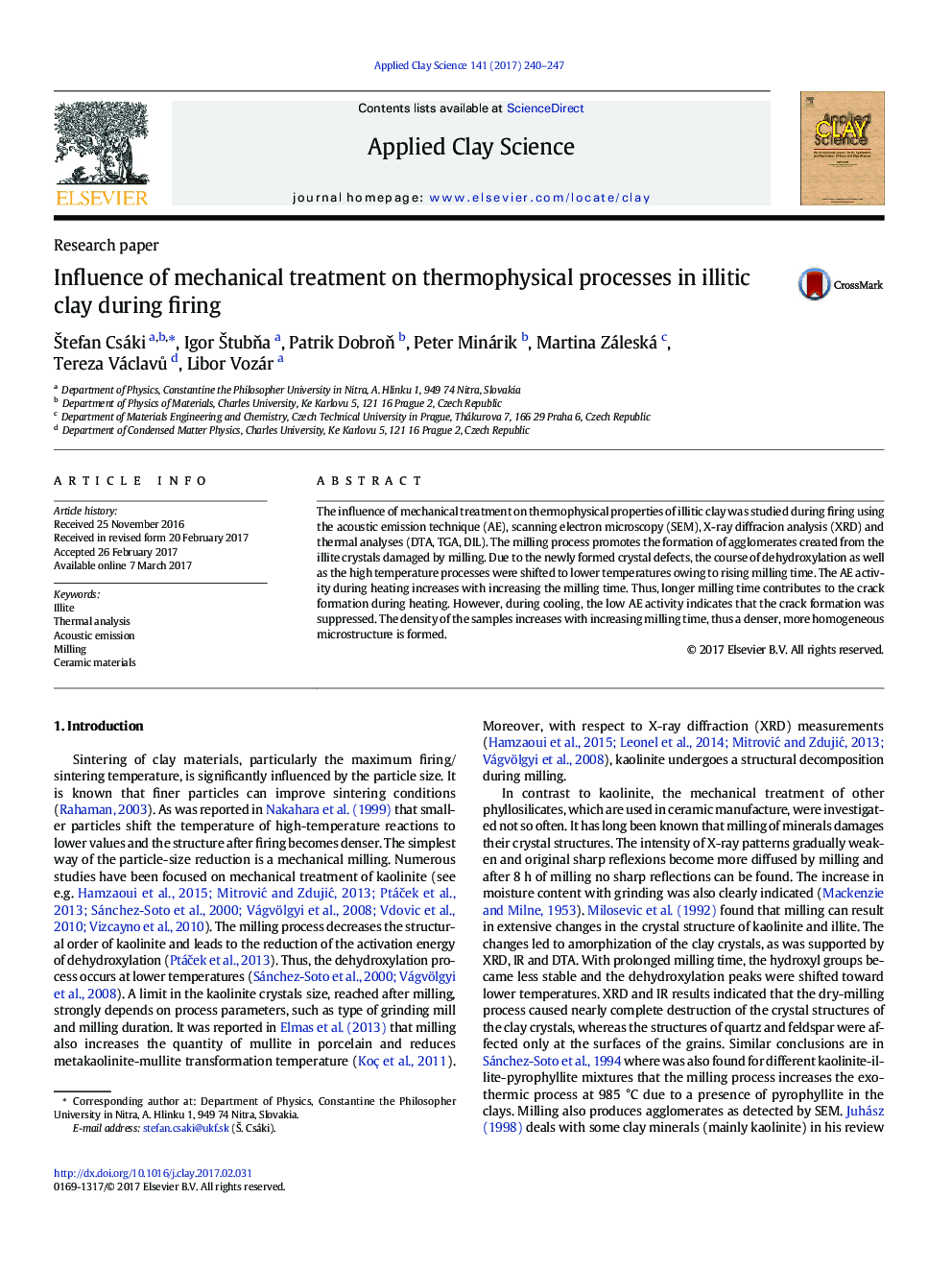| Article ID | Journal | Published Year | Pages | File Type |
|---|---|---|---|---|
| 5468646 | Applied Clay Science | 2017 | 8 Pages |
Abstract
The influence of mechanical treatment on thermophysical properties of illitic clay was studied during firing using the acoustic emission technique (AE), scanning electron microscopy (SEM), X-ray diffracion analysis (XRD) and thermal analyses (DTA, TGA, DIL). The milling process promotes the formation of agglomerates created from the illite crystals damaged by milling. Due to the newly formed crystal defects, the course of dehydroxylation as well as the high temperature processes were shifted to lower temperatures owing to rising milling time. The AE activity during heating increases with increasing the milling time. Thus, longer milling time contributes to the crack formation during heating. However, during cooling, the low AE activity indicates that the crack formation was suppressed. The density of the samples increases with increasing milling time, thus a denser, more homogeneous microstructure is formed.
Related Topics
Physical Sciences and Engineering
Earth and Planetary Sciences
Geochemistry and Petrology
Authors
Å tefan Csáki, Igor Å tubÅa, Patrik DobroÅ, Peter Minárik, Martina Záleská, Tereza Václavů, Libor Vozár,
